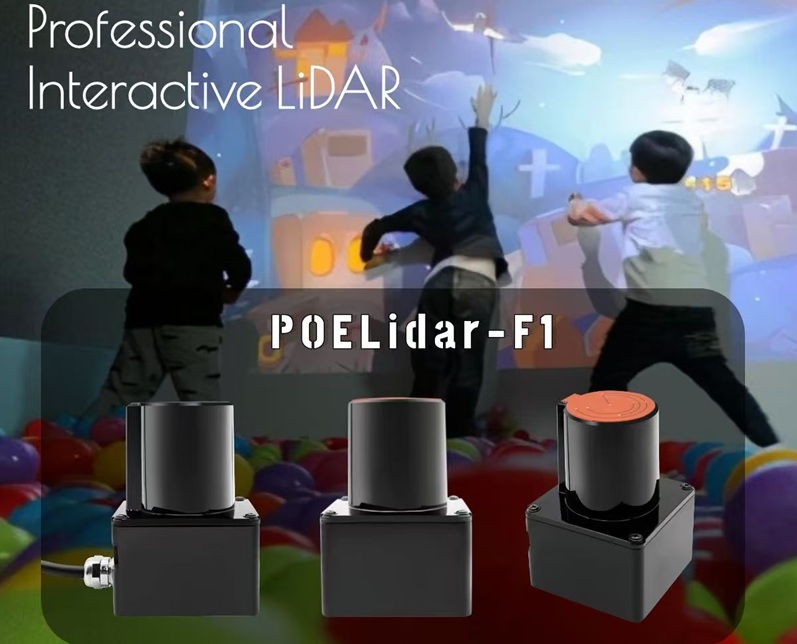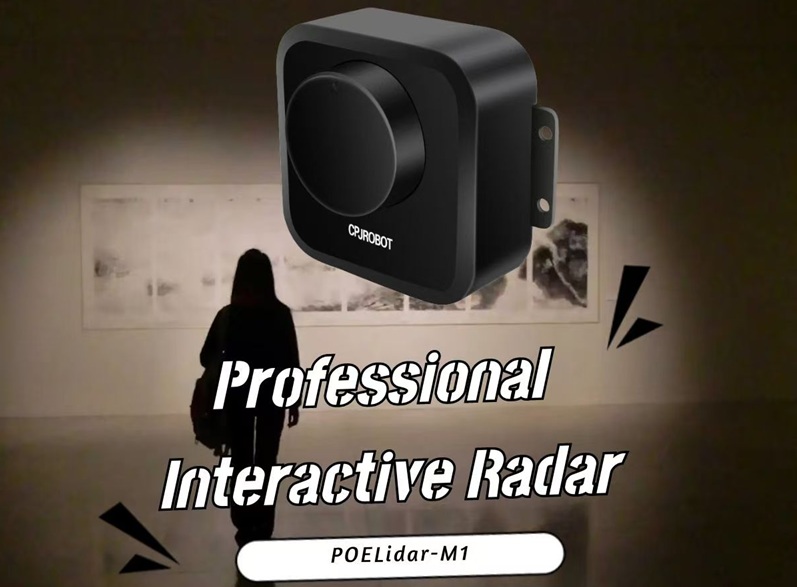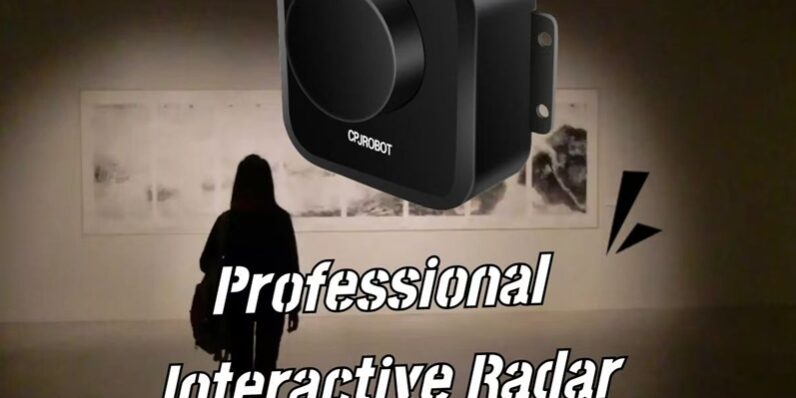In the realm of interactive technologies, LiDAR (Light Detection and Ranging) has emerged as a powerful tool, revolutionizing how we engage with digital content. One of the most exciting applications of this technology is the LiDAR interactive wall. This combination of LiDAR sensors and projection systems creates dynamic, multi-sensory experiences that captivate audiences and bring static visuals to life. In this article, we will explore the technology, advantages, and applications of LiDAR interactive walls, demonstrating how they are reshaping exhibitions, museums, retail spaces, and more.

What Is LiDAR Interactive Wall Technology?
LiDAR-based interactive walls use LiDAR sensors to detect motion, touch, and proximity, which then trigger real-time animations and sound effects projected onto a wall. This integration of LiDAR projection allows users to interact with content in a highly intuitive and engaging way, creating a seamless bridge between the physical and digital worlds.
Key Components of LiDAR Interactive Walls
- LiDAR Sensors
At the heart of the system, LiDAR sensors are responsible for capturing the presence and movements of users. These sensors use laser beams to detect the position of fingers or hands, allowing for multi-touch and gesture-based interactions. Unlike traditional touchscreens, LiDAR technology can work effectively in any lighting condition, unaffected by bright or dim environments. This makes it an ideal solution for settings where conventional touch technology might fail, such as in low-light or outdoor spaces. - Projection System
The second critical component of the system is the projection system, which projects high-resolution images, animations, and videos onto the wall. The projected content responds instantly to user input, transforming static visuals into dynamic, interactive scenes. As users interact with the wall by touching or gesturing, the projected content changes in real time, enhancing the immersive experience. - Interactive Software
The third essential piece of the puzzle is the interactive software, which manages the data captured by the LiDAR sensors. This software controls how the projection system responds to user actions, enabling customized content, animations, and interactions. It can be tailored to different use cases, whether it’s for educational purposes, entertainment, or retail applications.

Advantages of LiDAR Interactive Walls
1. Intuitive, Non-Touch Interactions
One of the most compelling aspects of LiDAR interactive walls is their ability to support non-touch interactions. Users can trigger content simply by touching or getting close to the wall, without the need for physical contact. This creates a more natural, intuitive experience, which can be particularly appealing in high-traffic public areas. For instance, a user might wave their hand near the wall to trigger an animation or sound, creating a sense of magic and engagement.
2. High Sensitivity and Precision
LiDAR technology offers exceptional precision, allowing for multi-touch interactions with high sensitivity. The sensors can detect multiple touchpoints simultaneously, making them ideal for collaborative environments where several users interact with the wall at once. Furthermore, LiDAR is not affected by environmental factors like lighting conditions or ambient noise, ensuring that the interactive experience remains accurate and consistent across different settings.
3. Versatile and Immersive Content
The LiDAR projection system can support a wide range of media types, including images, videos, animations, and audio. The interaction is not limited to just touch; it can involve gestures, proximity, or movement. This versatility allows the system to be used in various scenarios, from museum exhibits and trade show displays to retail spaces and interactive games. For example, in an art gallery, visitors can interact with digital paintings or sculptures, triggering animations and sound effects that bring the artwork to life.
4. Flexible Installation and Maintenance
LiDAR sensors are small and easily integrated into various environments, making them adaptable to different installation needs. Whether it’s a large-scale projection wall in a museum or a small interactive display in a retail store, the system can be customized to fit any space. Moreover, the system is typically low-maintenance, with centralized control software that allows for easy updates, content changes, and troubleshooting.
5. Multi-User Capability
Another standout feature of LiDAR interactive walls is their ability to support multiple users simultaneously. This is especially beneficial in public spaces, where several visitors can interact with the wall at once. The content responds in real-time to each individual’s actions, creating a shared, immersive experience for groups. For example, at a museum, multiple visitors could touch different areas of the wall to trigger unique animations, enhancing the collective engagement.
Applications of LiDAR Interactive Walls
LiDAR-based interactive walls are gaining traction across a variety of sectors due to their ability to deliver engaging, immersive experiences. Below are some of the most prominent applications:
1. Museums and Exhibitions
LiDAR interactive walls are an excellent way to enhance exhibitions and museum displays. They can be used to create dynamic educational experiences that engage visitors in real-time. For instance, a science museum might use an interactive wall to demonstrate complex biological processes, such as the life cycle of a cell. Visitors could touch different areas of the wall to trigger animations and sound effects, turning a static exhibit into a hands-on learning experience.
2. Corporate and Trade Show Displays
For corporate events, product launches, and trade shows, LiDAR interactive walls offer an innovative way to showcase products and services. By integrating LiDAR projection technology, companies can create interactive displays that captivate attendees, allowing them to explore product features or interact with virtual models. For example, a car manufacturer could use an interactive wall at an auto show to allow attendees to customize vehicle colors or features and view them in real-time.
3. Retail and Shopping Centers
In retail environments, LiDAR interactive walls provide a unique opportunity for brands to engage with customers in new ways. These walls can be used for interactive advertisements, where users can touch or gesture to view more details about a product or service. They can also serve as virtual try-on experiences, where customers can see how different products look in real-time, such as testing makeup or clothing. The interactive nature of the wall enhances the shopping experience, increasing customer engagement and boosting sales.
4. Education and Entertainment
LiDAR interactive walls are also making waves in the educational sector. Schools, libraries, and interactive learning centers can use these systems to create hands-on learning environments that capture the attention of students. These systems can be used to display educational videos, interactive games, and quizzes, transforming traditional classroom activities into engaging, tech-driven experiences.
In the entertainment industry, interactive walls can be used in theme parks, arcades, and museums to create captivating attractions and games. For example, a laser tag or interactive floor game could be enhanced with a LiDAR-based projection wall, offering a more immersive experience.
5. Healthcare and Public Spaces
LiDAR interactive walls can also be implemented in healthcare settings, such as hospitals and clinics, to provide informational displays or interactive educational content. In public spaces like malls or airports, they can serve as interactive directories, guiding visitors to their destinations with dynamic, visually rich content.
Real-World Case Studies
Case Study 1: Biopharmaceutical Exhibition
At the Biopharmaceutical Exhibition, a LiDAR-based interactive wall was used to demonstrate the dynamic processes of cell division. As visitors gently touched specific areas of the wall, the interactive system triggered a detailed animation of cell splitting, accompanied by informative audio feedback. This interactive display brought complex scientific concepts to life, creating an immersive learning environment for attendees.
Case Study 2: Touchstone Graphene Wall
Another application of LiDAR technology can be seen at the Touchstone Graphene Wall, where users could engage with a digital, interactive map of graphene’s molecular structure. By interacting with the projected content, users could trigger animations, sound effects, and visual changes that helped explain the material’s properties in an engaging and visually appealing way.
Conclusion
LiDAR interactive walls are transforming how we interact with digital content, offering a dynamic and immersive experience that appeals to a wide range of industries, from museums and retail to corporate events and entertainment. By combining LiDAR sensors with projection technology, these interactive systems create real-time, multi-sensory experiences that engage users and bring static content to life.
As technology continues to evolve, the potential applications of LiDAR-based interactive walls will expand even further, enabling new forms of engagement and interactivity across various sectors. For organizations looking to captivate their audiences and provide cutting-edge experiences, investing in LiDAR projection systems offers a powerful solution that promises to redefine the future of digital interaction.







